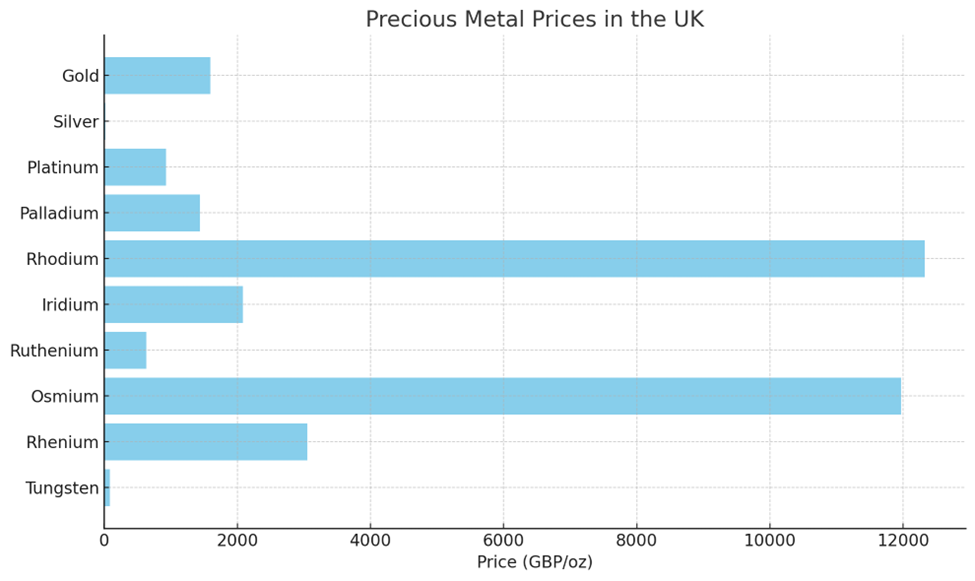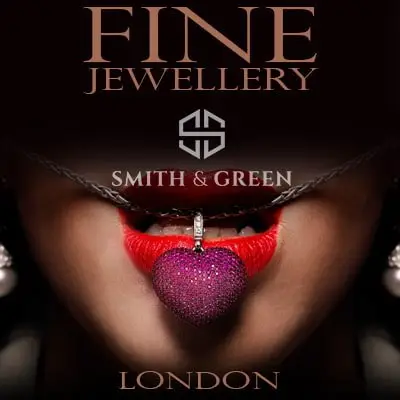In the captivating universe of jewellery, precious metals play a pivotal role. With distinct characteristics and a rich history, metals like gold, silver, platinum and their contemporary counterparts, such as tungsten and osmium, are central to this narrative. This article takes you through their various roles in jewellery making. From the classic to traditional metals to the innovative uses of newer ones, we explore how these elements shape our adornments and reflect our pursuit of beauty and uniqueness. Prepare to embark on a journey into the fascinating world of precious metals, where history meets innovation, and each piece narrates a unique story.
The Timeless Elegance of Gold
Gold, known for its lustrous sheen and malleability, has been a cornerstone in jewellery-making for centuries. Its history is as old as civilization itself, often associated with gods, immortality, and of course, wealth. But beyond its dazzling appearance, gold’s properties make it a jeweller’s favourite. Resistant to tarnish and corrosion, gold maintains its brilliance over time, symbolizing enduring beauty.
Fun Fact: Did you know that almost all of the gold on Earth came from meteorites that bombarded the planet over 200 million years after it formed?
In jewellery, gold’s purity is measured in karats, with 24-karat gold being the purest form. However, for added strength, gold is often alloyed with other metals like copper or zinc, resulting in various hues like rose gold or white gold. This versatility makes gold a perfect canvas for jewellers to craft pieces that are not only beautiful but also tell a story.
The Lustrous Journey of Silver
Silver, with its cool, moonlike radiance, has been a symbol of elegance and sophistication in jewellery. Its history is intertwined with that of human civilization, used not just in ornaments but also in currency, artefacts, and high-status objects. Silver’s malleability and ductility allow it to be crafted into intricate designs, from delicate filigree work to bold, contemporary pieces.
Incorporating Analogies: Just as a chameleon adapts to its environment, silver complements different styles, moods, and occasions, making it a versatile choice for jewellery lovers.
Despite its beauty, silver does tarnish over time when exposed to air. However, this is often seen not as a drawback but as a characteristic that adds to the metal’s charm, with the patina telling a story of the piece’s journey through time.
Platinum: The King of Metals
Platinum’s entry into the jewellery world brought with it a revolution. Known as the king of metals, platinum’s rarity and durability make it an epitome of exclusivity and prestige. It’s significantly rarer than gold and silver, making it a symbol of wealth and status.
Metaphor: Platinum in jewellery is like a solid foundation in a building – it provides strength, longevity, and an unmatched elegance that stands the test of time.
What sets platinum apart is its incredible durability and resistance to wear. Its density ensures that it holds gemstones securely, making it an ideal choice for engagement rings and heirloom pieces. The metal’s naturally white sheen doesn’t fade or tarnish, ensuring that the jewellery’s beauty endures as long as its memories.

Palladium: The Unsung Hero in Jewellery
Palladium, often overshadowed by its more famous group mates, is a hidden gem in the world of precious metals. Belonging to the same family as platinum, palladium shares many of its qualities but is lighter and more affordable. Its natural white colour and resistance to tarnishing make it an increasingly popular choice for wedding bands and fine jewellery.
Trivia: Palladium was used in jewellery for the first time during World War II when platinum was declared a strategic government resource.
Palladium’s lightweight nature makes it comfortable to wear, a feature especially appreciated in larger, statement jewellery pieces. Its ability to withstand the rigours of daily wear while maintaining its lustrous finish makes it a practical yet luxurious choice for modern jewellery designs.
The Rare Gems: Rhodium, Iridium, and Ruthenium
Moving beyond the more familiar faces of precious metals, we encounter the rare and exotic – rhodium, iridium, and ruthenium. These metals, though not commonly known, play a pivotal role in adding finesse to fine jewellery.
Rhodium, for instance, is often used in plating to give pieces a reflective white surface that enhances the brilliance of diamonds. Iridium and ruthenium, although less common, are prized for their unique properties. Iridium, with its high melting point and hardness, is often alloyed with platinum to increase its strength. Ruthenium, on the other hand, adds durability and a distinct dark hue when used in alloys.
“In the universe of precious metals, these rare elements are like the spices in a gourmet dish – not the main ingredient but critical in bringing out the true flavours.”
Their rarity and specific applications in jewellery-making position these metals as not just materials but as artisans’ tools, shaping the future of jewellery design with innovation and creativity.
Metals Allergies and the Rise of Hypoallergenic Jewellery
In the world of jewellery, the concern for metals allergies has led to an increased demand for hypoallergenic materials. Metals like palladium and platinum are celebrated for their low reactivity, making them ideal for sensitive skin. The trend towards hypoallergenic jewellery is not just a health consideration but also a testament to the industry’s adaptability and consumer-centric approach.
Trivia: Did you know that nickel, often found in metal alloys, is one of the most common causes of metal allergies in jewellery?
Tungsten and Rhenium: The New Contenders in Jewellery Making
The world of precious metals in jewellery is witnessing the rise of new players – tungsten and rhenium. Tungsten, known for its robustness and high melting point, brings a unique edge to contemporary designs. Rhenium, though less common, is valued for its rarity and durability, marking its niche in exclusive jewellery collections.
Analogy: Tungsten in jewellery is like modern architecture in a historical city, offering a refreshing contrast yet blending seamlessly with tradition.
Osmium: The Densest Precious Metal in Exclusive Designs
Osmium, the densest natural element, is carving its place in the realm of luxury jewellery. Its rarity and distinctive lustre give it an air of exclusivity, appealing to those seeking unique and avant-garde designs.
Metaphor: Incorporating osmium in jewellery is akin to adding a rare gemstone to a crown, enhancing its splendour and value.
Understanding the Price Calculation of Precious Metals in the UK
In the UK, the pricing of precious metals is a dynamic and intricate process influenced by various factors, including market demand, supply, global economic conditions, and currency exchange rates. Prices of precious metals are typically quoted per ounce (oz) in GBP.
- Market Demand and Supply: The basic economic principle of demand and supply plays a significant role. High demand or limited supply often drives prices up, whereas low demand or excess supply can lead to a decrease in prices.
- Global Economic Conditions: Economic stability, inflation rates, and monetary policies across the globe can impact the value of precious metals. Metals like gold are often seen as safe investments during economic turmoil, which can drive up prices.
- Currency Exchange Rates: As the UK market deals in GBP, fluctuations in the currency’s value against others (like the USD) can affect metal prices. A stronger GBP might lower the cost of importing metals, thus reducing prices and vice versa.
- Investor Behaviour: Investment trends, such as the buying and selling of metal-based funds or physical metals, also influence prices.
- Mining Costs and Production: The cost of extracting and processing metals can impact their market value. Higher production costs can lead to higher prices for the final product.
- Government Policies and Regulations: Taxation, import-export regulations, and other government policies can affect metal prices.
The chart below provides a snapshot of the current prices for various precious metals in the UK, expressed in GBP per ounce.
This chart reflects the complexity and fluctuating nature of precious metal pricing, underlining the importance of staying informed and understanding the market dynamics for both investors and enthusiasts.

Conclusion
The journey through the world of precious metals in jewellery is a dazzling exploration of art, science, and culture. From the traditional gold, silver, platinum, and palladium to the innovative use of metals like tungsten, rhenium, and osmium, each element contributes uniquely to the tapestry of fine jewellery. This article peels back layers of history, utility, and beauty, presenting a vivid picture of how these metals have shaped and continue to influence the world of adornment. The interplay between these elements and their impact on lifestyles, preferences, and even health, like in the case of hypoallergenic jewellery, reveals the dynamic nature of this industry. In essence, precious metals in jewellery are not just about adornment; they are a celebration of human ingenuity, a reflection of our heritage, and a nod to our aspirations for beauty and distinction.
FAQs
- What are hypoallergenic metals? Metals like platinum and palladium, known for low reactivity.
- Why is tungsten popular in jewellery? For its robustness and unique contemporary appeal.
- What makes osmium exclusive in jewellery? Its rarity and distinctive, lustrous finish.
- How is gold purity measured? In karats, with 24 being the purest form.
- Why are precious metals hallmarked? To certify their authenticity and quality.
















